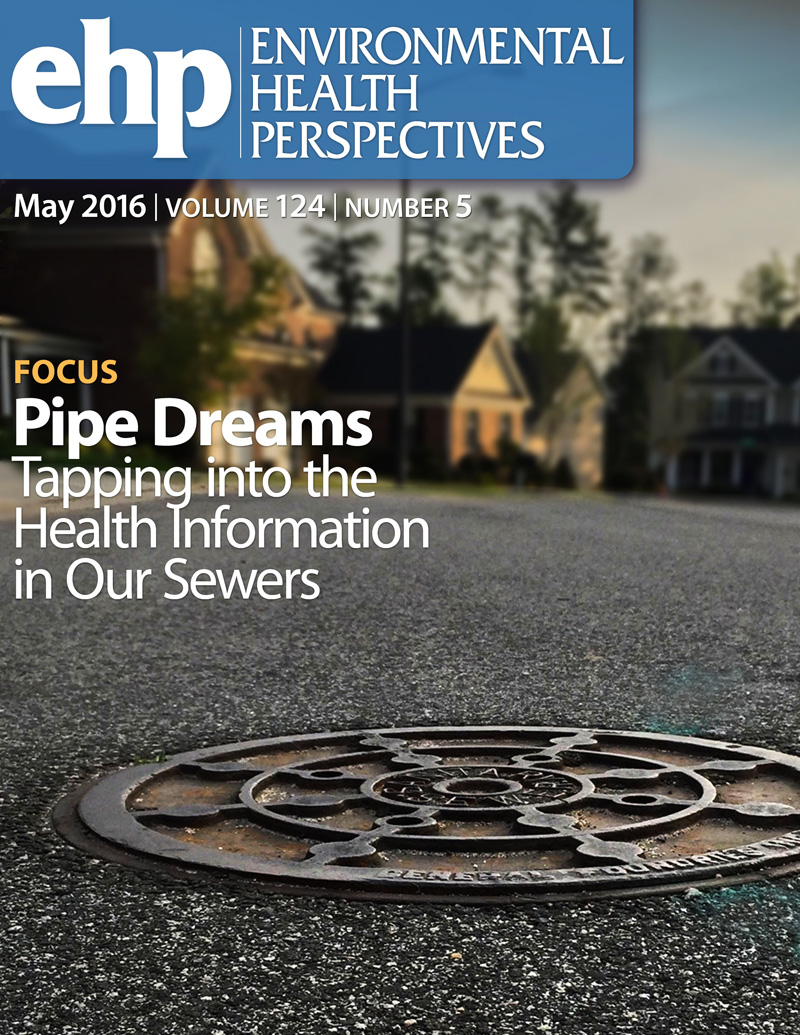Cumulative Human Health Risk Assessment of Regional Ozone and Volatile Organic Compounds from Unconventional Oil and Gas Sites in Colorado's Front Range.
IF 9.8
1区 环境科学与生态学
Q1 ENVIRONMENTAL SCIENCES
引用次数: 0
Abstract
BACKGROUND Most unconventional oil and gas (UOG) extraction in Colorado occurs within the Denver Metro/North Front Range (DMNFR) ozone Non-attainment Area (NAA). Previous UOG human health risk assessments do not consider cumulative risk from both volatile organic compounds (VOCs) and criteria air pollutants (CAPs) like ozone. METHODS We conducted a cumulative human health risk assessment (CHHRA) utilizing regulatory-grade 1- and 8-hour ozone measurements from a DMNFR United States Environmental Protection Agency (EPA) monitoring station and weekly and short-term (15 second - 1 minute) VOC air quality monitoring (AQM) data collected between 2018-2023 from ten near-pad air monitoring sites, three community sites, and one background site. Acute and chronic non-cancer hazard indices (HIs) for multiple health endpoints, as well as cancer risks, were calculated during well drilling, well completions, and production activity periods and compared between sites. VOC concentrations were compared between operations that used a petroleum-based drilling fluid versus a synthetic drill fluid. Differences in weekly chemical concentrations between sites, UOG phases, and drill muds were analyzed using repeated measures analysis of variance (ANOVA) with post-hoc pairwise comparisons with Bonferroni adjustment. RESULTS Acute HIs of VOCs and ozone ranged from 1.34 x 10-4 to 31.33 at the 95th percentile concentrations at all sites. One of the three community monitoring sites, Anthem, exceeded EPA thresholds for respiratory, immunological, and developmental endpoints during production and for the immunological endpoint during well completions. At the near-pad sites, acute hazards exceeded EPA thresholds during well completions for immunological, respiratory, reproductive, developmental, and neurological endpoints. Neurological and immunological HIs were above thresholds for the drilling phase at near-pad sites. Chronic HIs ranged from 8.43 x 10-4 to 0.47 at 95th percentile concentrations and, therefore, were below the HI threshold for all near-pad and community sites for all health endpoints. Cancer risks ranging from 209 to 335 in a million at 95th percentile concentrations were above EPA's thresholds for all sites, including the background site which is more heavily influenced by Denver-metro traffic emissions. CONCLUSIONS Our results suggest that for communities located near UOG well pads in the DMNFR ozone NAA, acute health risks persist after the implementation of best management practices to reduce emissions. Greater protection to public health could be afforded by establishing policies that require drilling and well completions to be conducted outside of summer ozone season. Further research is needed to address potential health risks from the use of synthetic drilling fluid. https://doi.org/10.1289/EHP16272.科罗拉多州前沿地区非常规油气场地臭氧和挥发性有机化合物的累积人体健康风险评估。
科罗拉多州的大多数非常规油气(UOG)开采都发生在丹佛地铁/北前山脉(DMNFR)臭氧非达标区(NAA)内。以前的UOG人类健康风险评估没有考虑挥发性有机化合物(VOCs)和臭氧等标准空气污染物(cap)的累积风险。方法利用DMNFR美国环境保护局(EPA)监测站的监管级1小时和8小时臭氧测量数据,以及2018-2023年间从10个近垫空气监测点、3个社区监测点和1个背景点收集的每周和短期(15秒- 1分钟)VOC空气质量监测(AQM)数据,进行累积人体健康风险评估(CHHRA)。在钻井、完井和生产活动期间,计算多个健康终点的急性和慢性非癌症危害指数(HIs)以及癌症风险,并在不同地点之间进行比较。在使用石油基钻井液和合成钻井液的作业中,对VOC浓度进行了比较。利用重复测量方差分析(ANOVA)、事后两两比较和Bonferroni调整,分析了不同地点、UOG相和钻井泥浆之间每周化学物质浓度的差异。结果各监测点挥发性有机化合物和臭氧的浓度在1.34 × 10-4 ~ 31.33之间。在三个社区监测点之一的Anthem,生产过程中的呼吸、免疫和发育终点以及完井过程中的免疫终点都超过了EPA的阈值。在近垫层区域,完井期间的免疫、呼吸、生殖、发育和神经终点的急性危害超过了EPA阈值。神经学和免疫学HIs高于近垫点钻孔阶段的阈值。慢性HI在第95百分位浓度范围为8.43 × 10-4至0.47,因此在所有健康终点的所有近pad和社区站点均低于HI阈值。在第95个百分位浓度下,所有地点的癌症风险在百万分之209到335之间,高于环保署的阈值,包括受丹佛地铁交通排放影响更大的背景地点。结论DMNFR臭氧NAA中UOG井场附近的社区在实施最佳管理措施以减少排放后,急性健康风险仍然存在。通过制定政策,要求在夏季臭氧季节之外进行钻井和完井作业,可以更好地保护公众健康。需要进一步研究以解决使用合成钻井液可能带来的健康风险。https://doi.org/10.1289/EHP16272。
本文章由计算机程序翻译,如有差异,请以英文原文为准。
求助全文
约1分钟内获得全文
求助全文
来源期刊

Environmental Health Perspectives
环境科学-公共卫生、环境卫生与职业卫生
CiteScore
14.40
自引率
2.90%
发文量
388
审稿时长
6 months
期刊介绍:
Environmental Health Perspectives (EHP) is a monthly peer-reviewed journal supported by the National Institute of Environmental Health Sciences, part of the National Institutes of Health under the U.S. Department of Health and Human Services. Its mission is to facilitate discussions on the connections between the environment and human health by publishing top-notch research and news. EHP ranks third in Public, Environmental, and Occupational Health, fourth in Toxicology, and fifth in Environmental Sciences.
 求助内容:
求助内容: 应助结果提醒方式:
应助结果提醒方式:


